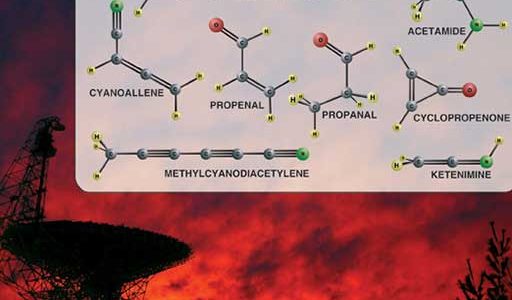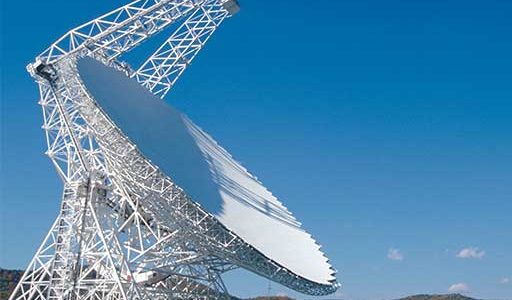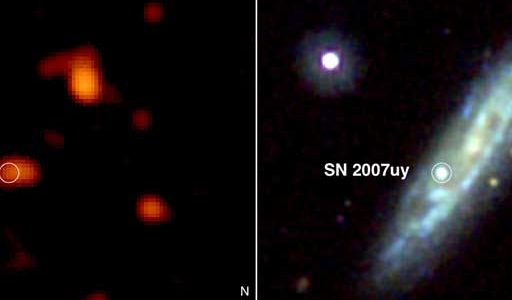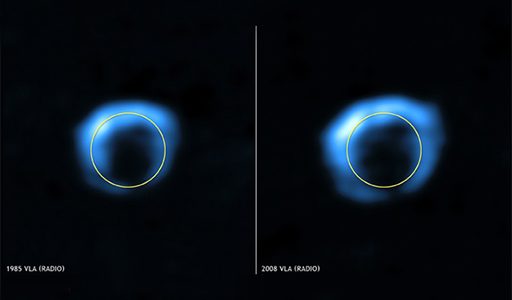Latest NRAO News
News is managed by NRAO News & Public Information. Questions about News? Have a story to share? Want to interview a scientist or create new media about our telescopes?

Scientists are using the giant Green Bank Telescope to go prospecting in a rich molecular cloud in our Milky Way Galaxy.

As NASA’s Phoenix Mars Lander descends through the Red Planet’s atmosphere toward its landing on May 25, its progress will be scrutinized by radio telescopes from the National Radio Astronomy Observatory.

Through a stroke of luck, astronomers have witnessed the first violent moments of a stellar explosion known as a supernova.

New Mexico Tech and the National Radio Astronomy Observatory will rename the observatory’s research center on the New Mexico Tech campus to honor retiring U.S. Senator Pete V. Domenici in a ceremony on May 30. The building that serves as the scientific, technical, and administrative center for the Very Large Array and Very Long Baseline Array radio telescopes will be named the Pete V. Domenici Science Operations Center.

Astronomers have discovered a speedy spinning pulsar in an elongated orbit around an apparent Sun-like star, a combination never seen before, and one that has them puzzled about how the strange system developed.

Astronomers have found the remains of the youngest supernova, or exploded star, in our Galaxy.





